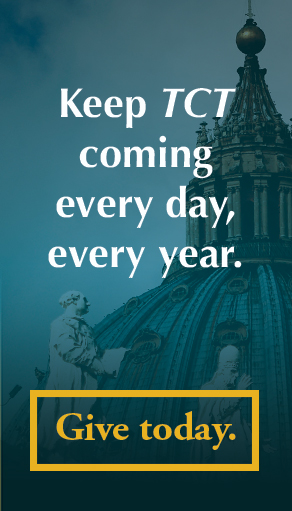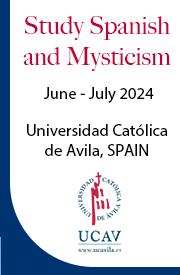Last month, the Pew Research Center published a brief profile of American Catholics based on their most recent slate of survey data. There was nothing terribly surprising in the report. But neither was there a great deal that was edifying.
The portion of Americans who call themselves Catholic (20 percent) has been slumping downward in recent years. (It was about 24 percent in 2007.) Less than a third (28 percent) of Catholic adults say they attend Mass at least weekly. Only 20 percent of American Catholics say they “attend Mass weekly and pray daily and consider religion very important in their life.”
Pope Francis remains very popular among Catholics. Three-quarters of American Catholics say they have “mostly favorable” (49 percent) or “very favorable” (26 percent) views of the pope, though the latter number is less than half of what it was ten years ago.
A sizable majority of Catholics (61 percent) think abortion should be legal in all or most cases, while 38 percent say it should be illegal in all or most cases. Among the portion of Catholics who attend Mass at least once a week, those numbers are basically reversed, though more than a third (34 percent) of Catholics who say they attend Mass at least weekly also believe abortion should be legal in all or most cases.
As I said, none of this is terribly surprising. Some of it is shocking, perhaps, but not surprising.
Another trend worth keeping in mind is this: The “center of gravity” of American Catholicism has, for a long time, been moving south. Most American Catholics no longer live in the Northeast or Midwest. The West has been home to significant numbers of Catholics since before the United States existed, but the explosion of Catholicism in the South is a major and underappreciated shift.

It’s not just that the Church in the South is growing, it’s growing as a distinctly minority Church in a heavily Protestant area. In the urban-ethnic bastions of 20th-century Catholicism –New York, Boston, Chicago – Catholics were often a majority or at least a large plurality for many decades. In these regions, the Church is contracting today. But the Church is growing fastest in the least historically Catholic region of the United States.
The reasons for this shift are doubtless complex. Immigration is part of the story. A general population shift south and west is part of it, too. But it’s hard not to notice that the fastest growing parts of the American Church are those least burdened by the real or imagined need to maintain and defend institutional, social, cultural, and, yes, political modes of ecclesial life that were built for a very different era, and have been slouching towards obsolescence for more than two generations.
The Pew data is backed up by plenty of other survey data. Sociologist Ryan Burge wrote last year about the decline in Mass attendance among Catholics. (Burge was looking at a different data set, but the trends match the Pew data.)
Burge noted the following: “In the early 1970s, about half of Catholics were weekly attenders. Today, it’s about 25 percent. And, no, that’s not a result of the pandemic. Attendance was already down to 26 percent in 2018 – long before the world had ever heard the word ‘COVID-19.’”
In another essay, published earlier this month, Burge asked whether the decline in Mass attendance is best described as a “rapid collapse or steady as she goes.” Burge begins by noting that each subsequent generation of Catholics is less likely to attend Mass weekly than the generation before. Millennials attend less frequently than Gen Xers, who in turn attend less than Boomers, and everyone less than the Silent Generation.
But Burge also points out that Mass attendance within each generation is also trending downward. For example, a smaller percentage of Boomers attend Mass weekly today than was the case in 2008. The same holds true for the other generations. This is compounded by the fact that, as we’ve seen, fewer Americans call themselves Catholic.

As Burge points out, “Just 14 percent of college-aged folks identify as Catholic now.” And of those, barely a quarter attend Mass regularly. Regular Mass-goers are a shrinking slice of a shrinking pie.
But Burge points to a bright spot. Or at least, to a reprieve in the bad news. The portion of Catholics who say that their religion is “very important” in their life and who attend Mass at least weekly has not changed much in 15 years. Roughly a quarter of American Catholics – 23-25 percent – fall into this category.
If I were a bishop, I’d want to know a lot more about that slice of my flock and why they are the way they are. What are the conditions most conducive to promoting and maintaining a deep and abiding practice of the faith? What are the habits of living – at home, school, work, prayer, in the community – that help make such integrity of faith and practice possible? And how do we make such habits of life more easily accessible to more people?
Every pastor has some sense of the answers to these questions, but they’re answers that require a much higher “resolution” and narrower focus than one gets from surveys of American Catholics generally, however helpful they may be for grasping the big picture.
Every pastor is responsible for his entire flock, whether they show up on Sunday or not. And attrition rates being what they are, and Mass attendance being what it is, it makes sense that the Church expend no little effort trying to reach – or at least show solicitude for – those who, for whatever reason, have drifted away.
But I’d also want to keep my eyes on what is actually working – and make every effort to have more of that. A good shepherd always goes after his lost sheep. Presumably, even the best shepherd would prefer his sheep not to stray too far in the first place.
__________
You may also enjoy:
Fr. Thomas G. Weinandy The American Catholic Church: A Defense
Fr. Gerald E. Murray Pope Francis Must Stop the Madness

















